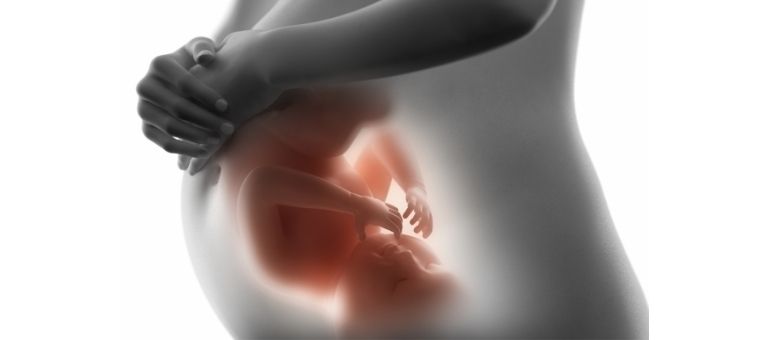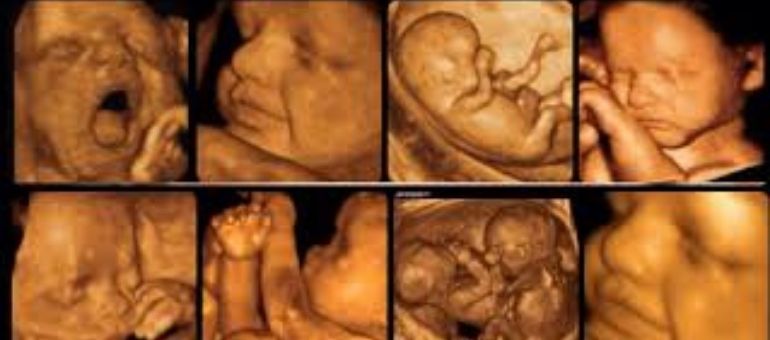OVARIAN CYSTS AND THEIR TREATMENT
Ovaries are female reproductive organs connected to the uterus via the fallopian tubes. During a specific time each month, an egg is released from the ovaries. These eggs travel toward the uterus with the help of the fallopian tubes. This process is called ovulation. In women, ovulation usually occurs between days 11 and 16, which is the middle of the menstrual cycle. If these eggs meet with sperm inside the uterus and fertilization occurs, a pregnancy takes place. If they do not meet sperm, they are expelled from the body in the menstrual bleeding that we call menstruation. Even before female babies are born, millions of eggs in their ovaries are waiting in a ready state at a certain stage. Between the ages of 9-12, the body prepares itself for the first menstrual period (menarche) through many mechanisms. With the first menstrual period, hundreds of these waiting eggs proceed to the next stage and begin the ovulation cycle. A growing egg cyst in the ovary, which we call a follicle, bursts in the middle of the menstrual cycle, releasing its egg cells into the uterus via the fallopian tubes. During this period (days 11-16 of the menstrual cycle), women may experience mild lower abdominal pain, and a few days of light pink vaginal spotting. Additionally, a small amount of fluid may be seen in the abdomen on an ultrasound. This is a natural process that shows your egg has been released (ovulation), and you should not be alarmed. Sometimes, this cyst, which we call a follicle, does not burst and continues to grow, forming what we call an ovarian cyst.
WHAT ARE THE DIFFERENT TYPES OF OVARIAN CYSTS?
- Simple Cyst: This is the most common type of cyst seen in the ovaries. They are typically benign ovarian cysts formed by fluid accumulation inside a follicle. They are usually well-defined cysts around 1-4 cm. With follow-up, they often disappear on their own within a few months.
- Hemorrhagic Cyst: These cysts are formed by the clotting of blood that occurs inside a simple cyst. They can reach up to 4-5 cm in size, depending on the amount of bleeding. In these cases, they are called a corpus hemorrhagicum cyst. Hemorrhagic cysts are mostly seen in a single ovary but can rarely be found in both. These cysts are common in individuals who have difficulty getting pregnant naturally and are undergoing fertility treatments. Additionally, the use of blood thinners can also cause hemorrhagic cysts.
- Endometrioma (Chocolate Cyst): This is the name given to the cystic structure that the disease endometriosis forms in the ovaries. They are well-defined ovarian cysts containing a dark black, chocolate-like fluid. They can be seen in one or both ovaries and can consist of a single chamber or multiple ones. The risk of these cysts turning into ovarian cancer is less than 1%. They can adhere to surrounding tissues, causing severe menstrual cramps (dysmenorrhea) or pain during sexual intercourse (dyspareunia). It is a disease that can lead to chronic pelvic pain and inability to get pregnant (infertility).
- Dermoid Cyst: A dermoid cyst is a condition that may contain hair, teeth, bone, and nerve tissue and must be surgically removed because there is a rare possibility of it turning into cancer. When diagnosed, they are benign ovarian tumors that are mostly 5-10 cm in size and constitute 60% of all such tumors.
- Polycystic Ovary Syndrome (PCOS): This is the presence of numerous very small cysts within the ovary. This condition is caused by a prolonged ovulation period for any reason. They form when the development of follicles that should burst each month stops at a certain stage, and they remain as cysts in the ovaries. When this continues to happen, many un-burst cystic structures are seen in the ovary.
- Ovarian Tumors: Ovarian cancer or ovarian tumors are types of cancer seen in the female reproductive organs. They are tumors formed by the uncontrolled proliferation of ovarian cells. Although more common after menopause, they can be seen at any age. They mostly develop from the surface layer of the ovaries and are named according to the tissue from which they developed. The most important reason for the delayed start of ovarian cancer treatment is that the disease does not cause any significant symptoms in its early stages. While there are usually no symptoms at the beginning, at later stages of the disease, patients may experience loss of appetite, weight loss, abdominal pain, abdominal swelling, and related shortness of breath. If the disease is detected early, the survival rate is high.
WHAT ARE THE SYMPTOMS OF OVARIAN CYSTS?
Most ovarian cysts do not cause any symptoms and are incidentally discovered during an ultrasound examination. Common symptoms include:
- Menstrual irregularities (the most common symptom).
- Abdominal pain and a feeling of pressure.
- Back, lower back, and groin pain.
- Pain during sexual intercourse.
- Recurring pain during menstrual periods.
- Abdominal swelling and a feeling of a palpable mass, an increase in abdominal girth.
- Urinary incontinence and a feeling of not being able to completely empty the bladder.
- Increased body hair and hair loss due to hormonal changes.
- Infertility.
- Difficulty with bowel movements and chronic constipation (caused by the cysts putting pressure on the bowel system).
HOW ARE OVARIAN CYSTS DIAGNOSED?
Ovarian cysts are often detected during a routine examination. Most of these cysts are diagnosed with an abdominal or vaginal ultrasound. With a gynecological exam and ultrasound, it is possible to determine if these cysts are benign or malignant (the size and shape of the mass, the distinction between a simple cyst or a solid mass, papillary extensions, calcifications, their relationship with surrounding tissues, etc.). In addition to the exam and ultrasound, a Magnetic Resonance Imaging (MRI) scan may be requested, and a blood test may be performed to check certain tumor markers. Cancer Antigen 125 (CA-125) is an important marker for ovarian tumors in a blood test. The probability of it being high increases in advanced stage ovarian tumors, but its reliability is limited in early-stage tumors. Unfortunately, CA-125 is not a marker specific to tumors; it can also be elevated in 1% of healthy women. It also tends to be elevated in cases like myoma and endometrioma. In addition to CA-125, other tumor markers used include serum alpha-fetoprotein (AFP), Beta-hCG, carcinoembryonic antigen (CEA), and Cancer Antigen 19-9 (CA 19-9).
WHAT ARE THE TREATMENTS FOR OVARIAN CYSTS?
MONITORING
Most ovarian cysts shrink on their own within 6 months of being detected. For this reason, for patients with no complaints, the size of the cyst can be monitored with a watchful waiting approach. The risk of ovarian cancer increases with age, especially during menopause. Nevertheless, these cysts can be monitored in patients who have thin walls, a diameter of less than 5 cm on ultrasound, no growth during follow-up, and normal CA-125 levels.
MEDICATIONS
Oral contraceptives (birth control pills) are used as a treatment option because they can accelerate the shrinking of the cyst.
SURGERY
Despite our efforts to classify masses radiologically and serologically, benign and malignant masses can share similar characteristics. For a definitive distinction, the masses must be surgically removed and examined in pathology to determine if they are benign or malignant. If the size of the cyst is over 10 cm, if it is immobile during the examination (meaning it has adhesions to surrounding tissues), if the surface of the cyst is irregular, if it contains solid parts, or if there is a cyst in both ovaries, these cysts should be surgically removed even if there is a chance they are benign, because they have the potential to turn into malignant cysts in the future. Cysts that are mobile during the examination (meaning they move freely and are not adhered to surrounding tissues) and are less than 6 cm with no solid parts on ultrasound are much more likely to be simple cysts. These cysts can be monitored for a few months. If the cysts do not shrink or completely disappear after treatment, surgery may be necessary. We use various surgical methods to remove cysts:
- Laparotomy (Open Surgery): This surgical technique allows us to remove masses with a high potential for malignancy as a whole without spreading them into the abdomen. It also provides a sufficient surgical field for us to perform cancer staging, which is convenient for both us and our patients.
- Mini-Laparotomy: We can remove small or medium-sized cysts with an incision that is smaller than a cesarean section. This allows for a shorter operating time and a lower rate of cyst rupture (when the cyst bursts on its own during surgery or is deliberately ruptured by the doctor). Since our patients have a small incision, they can be discharged on the same day.
- Laparoscopy (Minimally Invasive Surgery): We remove the cyst by peeling it from the ovarian tissue using instruments inserted through 2 or 3 small incisions, including the belly button. We then use special bags to remove the cyst from the abdomen and end the operation. Thanks to the smaller incision areas and shorter operating times, our patients recover quickly and can easily return to their daily lives.
DO CYST DISEASES RECUR AFTER SURGERY?
Some malignant cysts may recur due to their spread to neighboring tissues and structures. However, even if a cyst is malignant but has been surgically removed with no malignant cells remaining in the surgical margins, or if it is a benign cyst, the chance of recurrence is low. After cysts have been surgically removed, it is appropriate to have follow-up examinations with ultrasound every 6 months.






